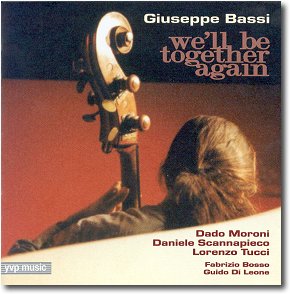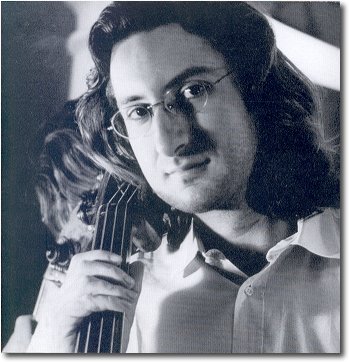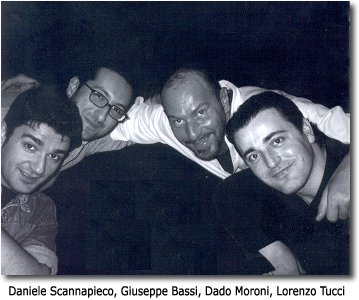|

|
 |
Giuseppe
Bassi
We'll be together again
1. L'angelo che
vola più in alto (G. Bassi)

2. Love walked in (G. Gershwin)
3. We'll be together again .- to zio Angelo (Fisher - Laine)
4. Haze (M.C. Mazza)
5. Parla più piano (M- Rota)
6. Roma nun fà la stupida stasera (A. Trovajoli)
7. Memory of a dream (G. Bassi)
8. BAss tune (D. Hallagan)
9. Good morning heartache - to Alessia (Drake/F/H)
10. Jehu (G. Bassi)
Dado Moroni -
piano
Daniele Scannapieco -
tenor sax
Giuseppe Bassi - double
bass
Lorenzo "Sabre" Tucci -
drums
Fabrizio
Bosso - trumpet,
flugelhorn
Guido Di
Leone - guitar |

 At
a superficial view, in the framework of the heterogeneous choice of the
compositions contained in this album, one could perceive a sort of
non-structured project, a lack of specific goal in putting together evergreen
tracks, great authors' Italian songs and original compositions forming a whole
which rightly suggests different approaches to interpretation. These approaches
can however lead to find out a unitary proposal if each single musician's
personality and expressive skill merge and blend in that dialogue we call
interplay and which becomes unavoidable in any jazz performance. At
a superficial view, in the framework of the heterogeneous choice of the
compositions contained in this album, one could perceive a sort of
non-structured project, a lack of specific goal in putting together evergreen
tracks, great authors' Italian songs and original compositions forming a whole
which rightly suggests different approaches to interpretation. These approaches
can however lead to find out a unitary proposal if each single musician's
personality and expressive skill merge and blend in that dialogue we call
interplay and which becomes unavoidable in any jazz performance.
An aim attained in the music of this work, the second recorded by
Giuseppe Bassi as a leader, thanks to the performance of top-level Italian
jazz musicians who, as their contemporary musicians in the world, live jazz
without prejudices, bringing up-to-date the linguistic material sedimented all
along its secular history and above all in the the latest decades.
So that in the two gems by Rota and Trovajoli, forming a
charming Italian couple, one can find out examples of absolute sobriety of
interpretation and that rhythmical way of playing guitar coming from Freddie
Green's,
 upon
which the double-bass improvises taking us back to the saxophone solos by
Paul Chambers. upon
which the double-bass improvises taking us back to the saxophone solos by
Paul Chambers.
The music written by Bassi, on the other hand, is thought as
structures functional to the development of improvisations and to the creation
of a particular effective dynamism within the group. Evergreens express new
harmonic,
rhythmical and timbre structures and change into tracks of modern mainstream
obeying its regulating philosophy. Therefore, contrary to what it seems like, we
can enjoy a CD with a definite musical design in which the relationship between
contemporaneity and tradition brings to the awareness that the jazz aesthetics
is both severe and ductile and then fit to welcome materials coming from
different worlds of music.
The manifold historical references in Bosso's language, in
Scannapieco's sound, in Di Leone's phrasing and accompaniment, in
Moroni's magistral and "complete" way of playing piano, in Tucci's
drumming, in Bassi's way of conceiving the instrument - he plays the
historical role of backbone of the group and at the same time imposes a real
parity of the solo performance - do not produce a stereotyped and old language
but they are the pre-requisite to think modern and firmly. That firmness coming
from devotion and competence and that evolution being the fruit of the sincere
will of expressing oneself.
Maurizio Franco
Insert an opinion
This page has 1.805 hits
Last Modified Date: 15/01/2005

|
|

